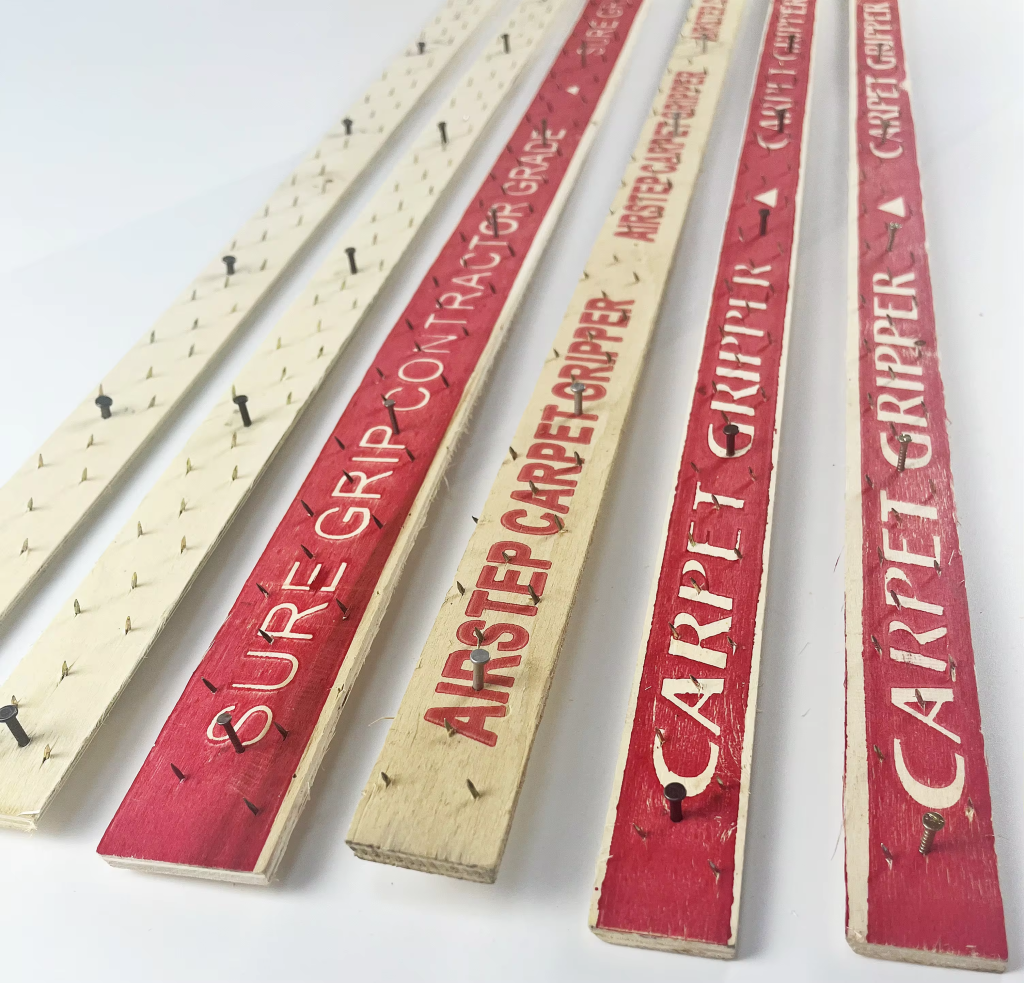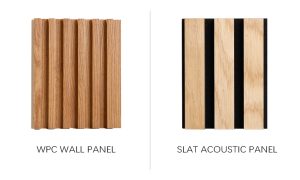Installing carpet tack strips is a key step in laying down carpet, as they hold the carpet in place and provide a secure fit. Here’s a step-by-step guide on how to install them:

Tools and Materials Needed:
- Carpet tack strips
- Hammer
- Nails (typically 1-inch for wood subfloors, longer for concrete)
- Concrete nails or adhesive (if installing on concrete)
- Knee pads (optional for comfort)
- Measuring tape
- Safety glasses
- Pry bar (for removing baseboards, if necessary)
- Utility knife (for cutting strips)
Steps:

1. Preparing the Room:
- Remove Furniture: Move all furniture and obstructions out of the room to give you clear access to the floor.
- Old Carpet or Flooring: If there’s existing carpet or flooring, remove it completely. Pull up the carpet and padding using pliers, and use a utility knife to cut it into manageable sections. Be sure to also remove any old tack strips if they’re damaged.
- Subfloor Inspection: Check the subfloor for any damage, nails, or debris. Repair any cracks, fill in holes, and ensure the surface is clean and even. This step is crucial for the proper installation of the tack strips and carpet.
2. Measuring and Cutting Tack Strips:
- Measuring the Room: Measure the walls and other areas where the carpet will meet, such as around doorways, alcoves, or stairs.
- Cutting Tack Strips: Tack strips typically come in 4-foot lengths, but you may need to cut them to fit specific sections. Use a hacksaw or a heavy-duty utility knife to cut the strips. Ensure the cuts are straight for a clean installation.
3. Positioning the Tack Strips:
- Gapping from the Wall: Place the tack strips ¼ inch away from the wall. This small gap allows the carpet to be tucked in between the strip and the wall later during the stretching process.
- Direction of the Tacks: The pins or tacks on the strips should be angled towards the wall to grip the carpet effectively. Ensure all strips are facing the correct direction.
4. Securing the Tack Strips:
- Nailing into Wooden Subfloors:
- Nail Placement: Use 1-inch nails for wooden subfloors. Hammer the nails through the pre-punched holes in the tack strips, placing them every 6 to 8 inches.
- Checking Security: After nailing, check that the strips are securely attached to the floor by giving them a gentle tug. They should not move.
- Installing on Concrete Subfloors:
- Using Adhesive: For concrete subfloors, use a strong construction adhesive like liquid nails if you prefer not to use nails. Apply a bead of adhesive to the back of the tack strip and press it firmly onto the concrete. Allow the adhesive to dry according to the manufacturer’s instructions before proceeding.
- Using Concrete Nails: Alternatively, use concrete nails if you prefer a more traditional method. Drill pilot holes using a masonry bit slightly smaller than the nail diameter, then hammer in the nails.
- Nail Alternatives: Powder-actuated nailers can be used to drive nails into concrete, making the process faster and less labor-intensive.
5. Installing Tack Strips Around Obstacles:
- Doorways: For doorways, cut the strips so that they don’t extend into the door frame. Leave a gap in the tack strips where the carpet meets a different type of flooring, or where you’ll need a transition strip.
- Corners and Curved Areas: If you’re installing in a room with rounded walls or corners, cut the strips into smaller sections to follow the curve smoothly. This will help maintain a tight grip on the carpet.
6. Adjusting and Double-Checking:
- Gaps and Alignment: After placing the strips, ensure that the gaps between them and the walls are consistent. Adjust as needed. The gap should be small but sufficient to tuck the carpet.
- Secure Attachment: Walk around the perimeter and ensure that all strips are firmly secured. Loose strips can cause problems when stretching the carpet.
7. Preparing for Carpet Installation:
- Carpet Padding: Install carpet padding after the tack strips. The padding should be laid edge-to-edge without overlapping and secured with staples or tape, leaving a gap at the edge of the room where the tack strips are.
- Tucking and Stretching: When the carpet is laid over the padding, use a knee kicker and a power stretcher to stretch the carpet onto the tack strips. The carpet should hook onto the tacks, holding it securely in place. Then, tuck the edges into the gap between the tack strip and the wall using a carpet tucker or a putty knife.
Additional Tips:

- Safety First: Tack strips have sharp nails, so wear gloves to protect your hands during installation.
- Baseboard Consideration: If you’ve removed the baseboards, you’ll need to reattach them after installing the carpet. This will give your room a finished look and hide the edges of the carpet.
- Cutting Around Obstructions: Use small, angled cuts on the tack strips when working around pipes or other permanent floor obstructions to ensure full coverage without leaving gaps.
This method ensures your carpet will be firmly held in place, with a smooth and professional finish.






